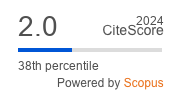Ultrasound-Guided Percutaneous Treatment of Liver Abscesses: Long Term Results in a Single Center
Keywords:
Interventional ultrasound, Needle aspiration, Catheter drainage, Pyogenic liver abscessAbstract
AIM: To analyze the results of ultrasound-guided percutaneous needle aspiration (PNA) and percutaneous catheter drainage (PCD) in the treatment of pyogenic liver abscesses. Methods: 71 patients (42 females and 29 males, average age 56.2±12.3) with pyogenic liver abscesses were treated with ultrasound guided PNA and/or PCD. Patients with liver abscess <50 mm and ≥50 mm in diameter were initially treated with PNA and with 8-French catheter drainage, respectively. The clinical characteristics, underlying diseases, organism spectra, therapeutic methods, and mortality rates were analyzed. Results: PNA was performed in 35 patients (49.3%) as initial treatment. In 14 patients needle aspiration was a definitive and successful treatment, while 17 out of 35 patients (48.6%) had a recurrence of abscess and required continuous catheter drainage. After PNA three patients were referred for surgery. In 13 patients PCD applied after PNA was a definitive and successful treatment, but 4 patients had to be transferred for surgery in this specific group. In 36 patients (50.7%) PCD was performed initially. In 12 patients PCD was performed twice. In all 7 deceased patients malignancy was the underlying condition. Forty-one patients (57.7%) underwent surgical interventions in the abdomen before percutaneous treatment. Cultures were positive in 54 patients (76 %). There were no complications related to the procedure. Conclusion: Ultrasound-guided percutaneous treatment of liver abscess is a safe and effective alternative to surgery, especially in critically ill patients. We recommend PNA and PCD as primary treatments for liver abscesses <50 mm and ≥50 mm in the longest diameter, respectively.References
Noyer CM. Pyogenic liver abscess. In: Brandt LJ, editor. Clinical practice of gastroenterology. Philadelphia: Churchill Livingstone; 1999. p. 904-8.
Seeto RK, Rockey DC. Pyogenic liver abscess. Changes in etiology, management, and outcome. Baltimore: Medicine. 1996; 75(2): 99-113.
Bergert H, Kersting S, Pyrc J, Saeger HD, Bunk A. Therapeutic options in the treatment of pyogenic liver abscess. Ultrashall Med. 2004; 25(5): 356-62.
Barakate MS, Stephen MS, Waugh RC, Gallagher PJ, Solomon MJ, Storey DW, et al. Pyogenic liver abscess: a review of 10 years’ experience in management. Aust N Z J Surg. 1999; 69(3): 205-9.
Huang CJ, Pitt HA, Lipsett PA, Osterman FA Jr, Lillemoe KD, Cameron JL, et al. Pyogenic hepatic abscess. Changing trends over 42 years. Ann Surg. 1996; 223(5): 600-7.
Mohan S, Talwar N, Chaudhary A, Andley M, Ravi B, Kumar A. Liver abscess: a clinicopathological analysis of 82 cases. Int Surg. 2006; 91(4): 228-33.
Zerem E, Bergsland J. Ultrasound guided percutaneous
treatment of splenic abscesses: The significance in treatment of critically ill patients. World J Gastroenterol. 2006; 12(45): 7341-5.
Rajak CL, Gupta S, Jain S, Chawia Y, Gulati M, Suri S. Percutaneous treatment of liver abscesses: Needle aspiration versus catheter drainage. A J R Am J Roentgenol. 1998; 170(4):1035-9.
Zibari GB, Maguire S, Aultman DF, McMillan RW, McDonald JC. Pyogenic liver abscess. Surg Infect (Larchmt). 2000; 1(1): 15-21.
Lo RH, Yu SC, Kan PS. Percutaneous needle aspiration
in the treatment of hepatic abscess: factors influencing patients’ outcome. Ann Acad Med Singapore. 1998; 27(2): 173-7.
Giorgio A, Tarantino L, Mariniello N, Francica G, Scala E, Amoroso P, et al. Pyogenic liver abscesses: 13 years of experience in percutaneous needle aspiration with US guidance. Radiology. 1995; 195(1): 122-4.
Yu SC, Ho SS, Lau WY, Yeung DT, Yuen EH, Lee PS, et al. Treatment of pyogenic liver abscess: prospective randomized comparison of catheter drainage and needle aspiration. Hepatology. 2004; 39(4): 932-8.
Thomas J, Turner SR, Nelson RC, Paulson EK. Postprocedure sepsis in imaging-guided percutaneous hepatic abscess drainage: how often does it occur? A J R Am J Roentgenol. 2006; 186(5): 1419-22.
Zerem E, Jusufović R. Percutaneous treatment of univesicular versus multivesicular hepatic hydatid cysts. Surg Endosc. 2006; 20(10): 1543-7.
Inoue T, Hirata I, Egashira Y, Ishida K, Kawakami K, Morita E, et al. Refractory ulcerative colitis accompanied with cytomegalovirus colitis and multiple liver abscesses: A case report. World J Gastroenterol. 2005; 11(33): 5241-4
Bahloul M, Chaari A, Bouaziz-Khlaf N, Kallel H, Herguefi L, Chelly H, et al. Multiple pyogenic liver abscess. World J Gastroenterol. 2006; 12(18): 2962-3.
Rendon Unceta P, Macias Rodriguez MA, Correro Aguilar F, Prieto Garcia F, Martin Herera L. Hepatic abscesses: is simple aspiration puncture with echography control an alternative to catheter drainage? Gastroenterol Hepatol. 2000 Dec; 23(10): 470-3.
Akinci D, Akhan O, Ozmen MN, Karabulut N, Ozkan O, Cil BE, et al. Percutaneous drainage of 300 intraperitoneal abscesses with long-term follow-up. Cardiovasc. Intervent. Radiol. 2005; 28(6): 744-50.
Lee KT, Wong SR, Sheen PC. Pyogenic liver abscess:
an audit of 10 years’ experience and analysis of risk factors. Dig Surg. 2001; 18(6): 459-66.
Lambiase RE, Deyoe L, Cronan JJ, Dorfman GS. Percutaneous drainage of 335 consecutive abscesses: Results of primary drainage with 1-year follow-up. Radiology. 1992; 184: 167-79.
Tan YM, Chung AY, Chow PK, Cheow PC, Wong WK, Ooi LL, et al. An appraisal of surgical and percutaneous drainage for pyogenic liver abscesses larger than 5 cm. Ann Surg. 2005; 241(3): 485-90.
Alvarez Perez JA, Gonzalez JJ, Baldonedo RF, Sanz L, Carreno G, Junco A, et al. Clinical course,treatment, and multivariate analysis of risk factors for pyogenic liver abscess. Am J Surg. 2001 Feb; 181(2): 177-86.
Wong WM, Wong BC, Hui CK, Ng M, Lai KC, Tso WK, et al. Pyogenic liver abscess: retrospective analysis of 80 cases over a 10-year period. J Gastroenterol Hepatol. 2002 Sep; 17(9): 1001-7.
Cerwenka H, Bacher H, Werkgartner G, El-Shabrawi A, Kornprat P, Bernhardt GA, et al. Treatment of patients with pyogenic liver abscess. Chemotherapy. 2005; 51(6): 366-9.





